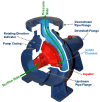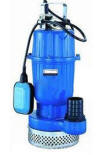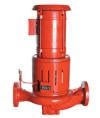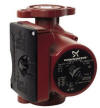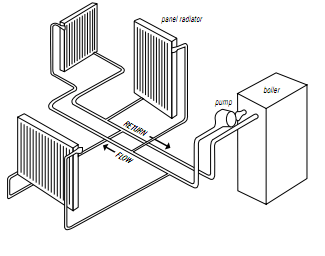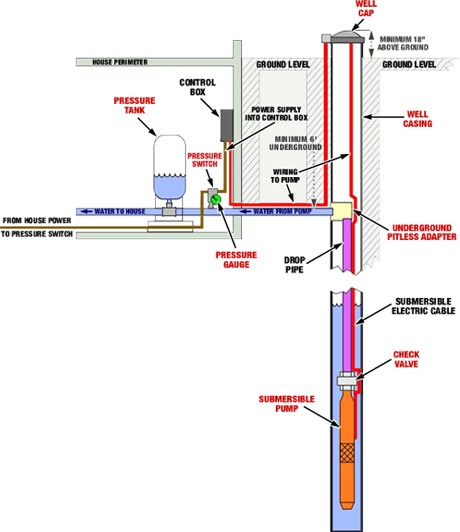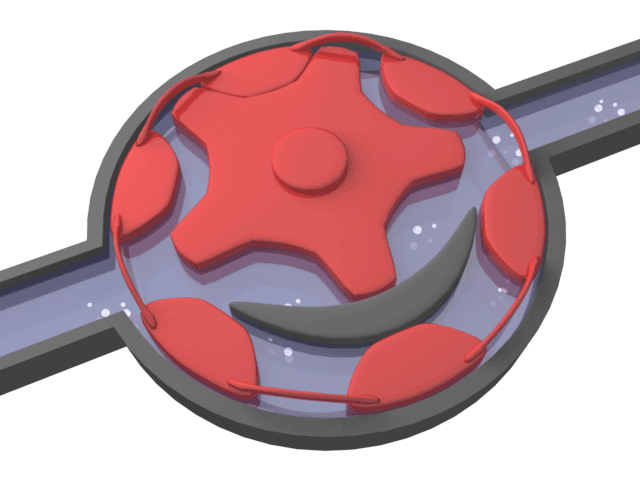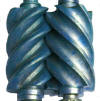In this article, we will cover the different types of pumps. Various types of pumps have been in use since the middle ages to deliver water and waste to their final destinations. Today there are hundreds of types of pumps that utilize a few key principles in the movement of liquids, slurries and gasses. Using physical or mechanical means to displace liquids, pumps have found their way into all of the mechanical trades.
Although all types of pumps displace liquids (or gasses), the mechanical means used to accomplish this, vary greatly and are categorized into five types of pumps which are:
- Velocity pumps
- Positive displacement pumps
- Impulse pumps
- Gravity pumps
- Buoyancy Pumps
Velocity Pumps (Rotodynamic Pumps)
Velocity pumps are the most common types of pumps used in the plumbing field and operate by increasing the velocity of the fluid which thereby increases its pressure head. One major benefit of velocity pumps are their ability to operate in a closed system without creating excessive pressure build-up as with positive displacement pumps. Some common types of velocity pumps are:
Centrifugal Pumps
Centrifugal Pumps are by far the most common pump in use today and may be found anywhere from your home to the largest mechanical processing plants. These pumps operate by imparting the mechanical force from a motor to an impeller, which increases the velocity of the liquid using centrifugal force. Some centrifugal pumps you may be familiar with are: submersible and shallow well jet pumps, dewatering and recirculating pumps. A few examples of centrifugal pumps can be seen below.
The following diagram shows the typical installation for a Centrifugal Circulating Pump for a Closed Loop Hot-Water Boiler piping system.
The following diagram shows the typical installation for a shallow well centrifugal Convertible Jet pump. These types of systems are a very popular home pumping system. Click here to view the different Types of Water Wells.
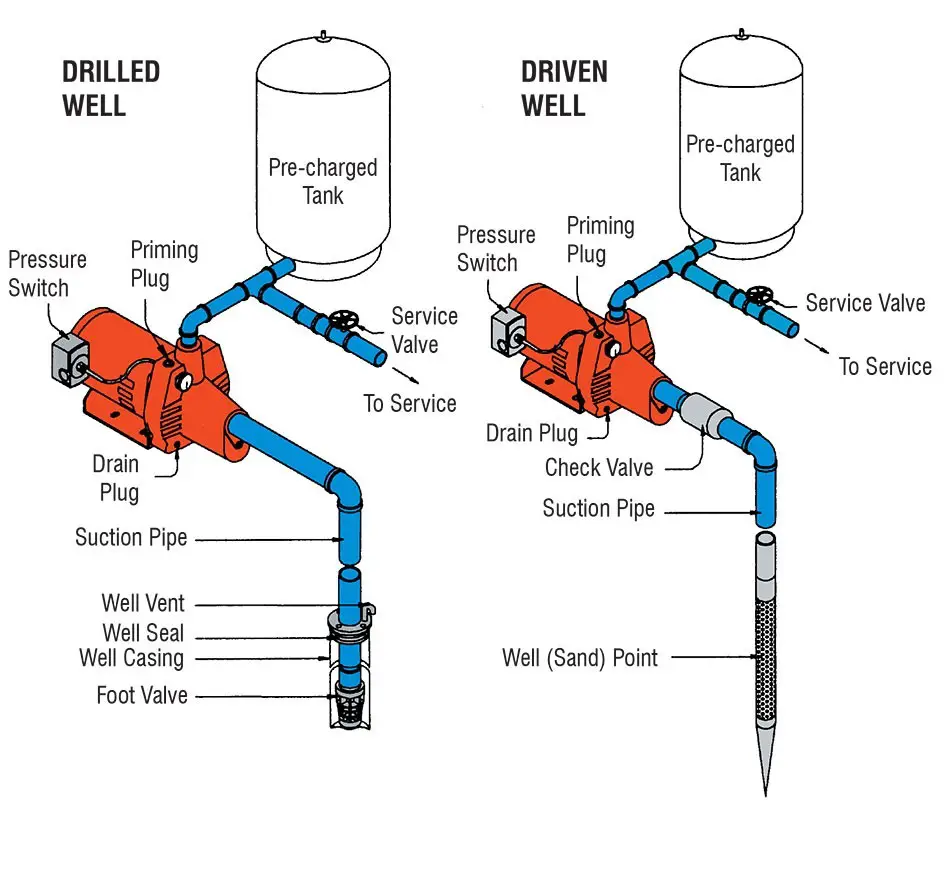
The following diagram shows the typical installation for a deep well centrifugal Submersible Jet pump. This type of system is the most popular and most reliable of all pumping systems. Click here to view the different Types of Water Wells.
Axial flow pumps
Axial flow pumps use an inline propeller operating directly in the pipe to move the fluid. These pumps are most commonly used for industrial applications where low head/high flow rates are required.
Positive Displacement Pumps
Positive displacement pumps; as the name suggests, will move a fixed quantity of liquid for every cycle of operation from the suction side to the discharge side creating a constant flow. Because they continually displace fluid while the pump is operating, dangerous pressures can build up downstream of the pump if a valve is closed making the need to install a pressure relief valve mandatory. Positive displacement pumps are broken down into two main categories, which are:
Rotary Type Positive Displacement Pumps
Rotary positive displacement pumps utilize rotating mechanical components to trap fluid on the suction side and force it out the discharge side. To work effectively the rotating parts must have very tight clearances with the pump casing. Here are a few examples of rotating positive displacement pumps:
Gear Pump Screw Pump Rotary Vane Pump
Reciprocating Type Positive Displacement Pumps
Reciprocating positive displacement pumps use either pistons, diaphragms or plungers in concert with check valves to pump liquids. Reciprocating pumps can be single acting; where the pump is either sucking or discharging, or they can be dual acting; where the pump is sucking and discharging concurrently.
As you can see in the picture below, the check valves control the direction of flow.
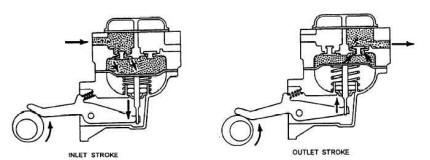
- Image sources see Note 1

